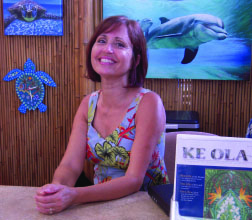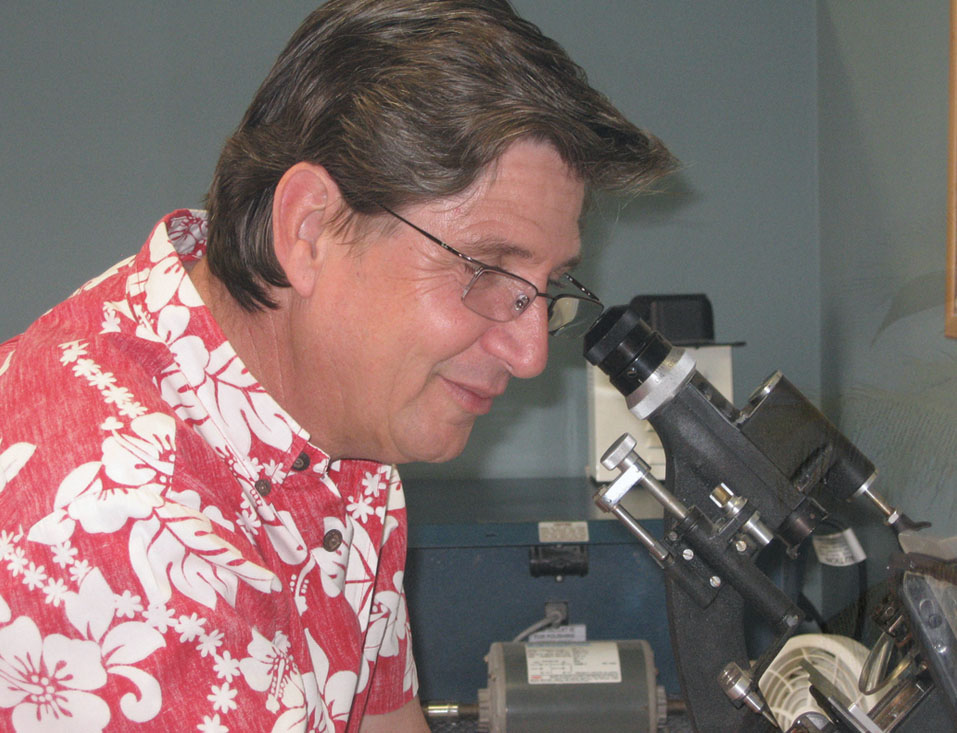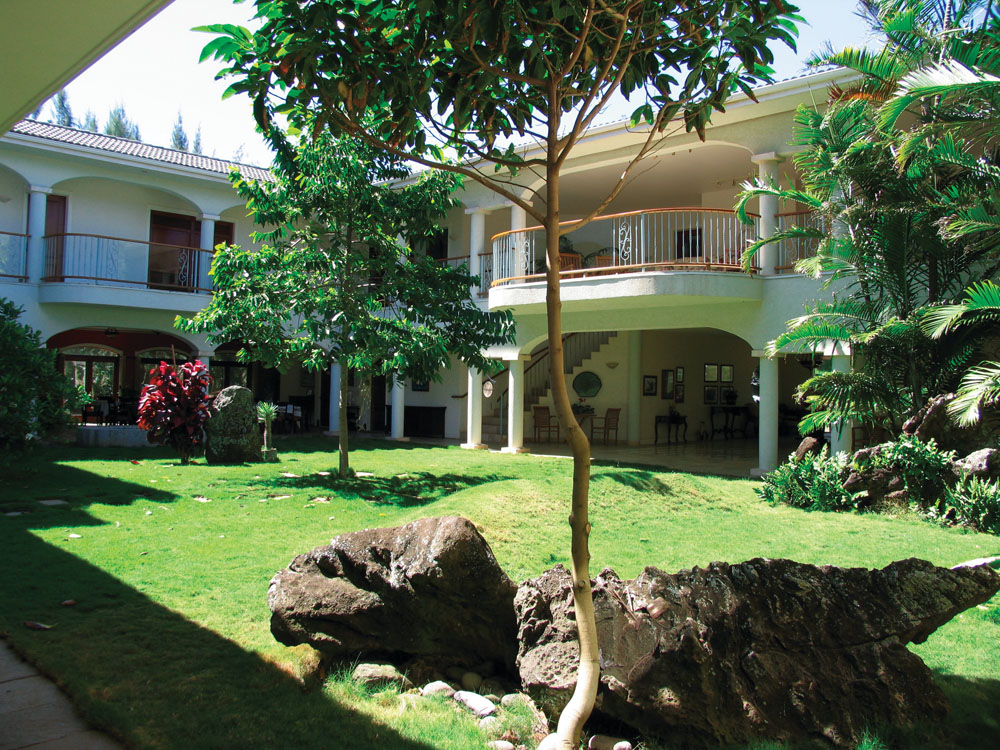
Between a Rock and a Soft Place: Hawai‘i Island Retreat at Ahu Pohaku Ho‘omaluhia
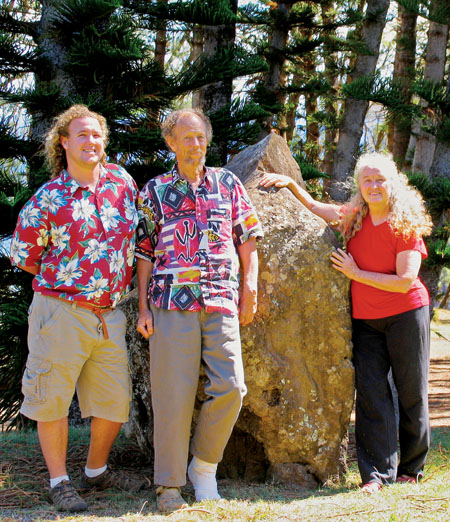
By Cynthia Sweeney
Jeanne Sunderland recalls first being brought to the “gathering place of the stones” by her teacher, Kumu Tommy Sullivan, over 20 years ago. They arrived by canoe and were silent as they explored the land. Like a good student, Jeanne listened. But finally she was so moved that she had to ask why they had come to this place.
“He said to me, ‘I was told to bring you here’. There was a knowing. This was it.”
Little did she know that 10 years later she would revisit this place, and the reason would be clear. When the land speaks to you, you listen. And in that quiet space you may be blessed with a vision. Ahu Pohaku Ho‘omaluhia was realized in just this way.
The Hawai‘i Island Retreat, built on 60 culturally rich acres of rugged, sublime North Kohala coastline, is the result of such a vision. At the retreat, time seems to stand still and offers space for people to find themselves, to find true sanctuary and return to that small voice within that says, “All is well.”
For Jeanne and her husband, Robert Watkins, building the retreat has been a passion, a blessing, a challenge and the culmination of lives spent in service.

“The goal is to return to our sacred selves that everyone has within them: the self that is always healthy and is the highest and best of ourselves. We all get distracted by the world. This retreat is for people to come and be at peace, to listen to their inner guidance,” Jeanne explained. “The land, the food, the spa treatments all support and help sustain that.”
Jeanne and Robert are long-time residents of Kohala. Jeanne spent many years at the Ritz Carleton, now the Fairmont Orchid, where she brought to life the “spa without walls” concept.
She also studied with noted Hawaiian healers in both the art of healing with plants, la‘au lapa‘au and lomilomi massage. Robert was a general practitioner and emergency room physician in Kohala for 30 years. In his private practice, he incorporated complementary Hawaiian medicine, healing plants and massage. Their son, Daemion, is the retreat’s general contractor.
“People kept coming to me asking to do retreats. That’s when we started looking for land. As soon as I saw this land I said ‘yes’. There was just a knowing that came to us,” Jeanne recalled.
Jeanne and Robert had been looking for property to realize their vision of a healing retreat, when a local friend brought them to this hard-to-find parcel of land. Jeanne realized this was the same place her teacher had taken her by canoe 10 years ago. So again she listened. She recalled the words of the late Papa K. Kepilino, a renowned Native Hawaiian master healer.

“’The land of Kohala is blessed with very strong mana,’ he said. ‘And the location of Ahu Pohaku is historically important as healing, inspirational ‘aina.’”
Jeanne and Robert are students of Hawaiian culture with a deep, abiding respect for the land. They understand why they are here. It is not random. They were drawn to this place, and have remained true to their vision, seamlessly blending healing, sustainability, and old-style, Hawaiian elegance.
“The basis to a lot of what we’ve done is the belief that the natural world is what is at the heart of all the beauty in the world. To hear the sounds, smell the smells, to be surrounded by inherent beauty that we have enhanced, not adding to it, and using all the stones is integral to our belief. The name of this place is Ahu Pohaku Ho‘omaluhia, the “gathering place of the stones.” We have tried to use all of those here to accentuate the beauty that we are building on, the unnatural things we brought in,” Robert explained.
Though the retreat opened just two years ago, the 15,000-square-foot lodge has an old Hawai‘i feel. It could have been built last year, or 20 years ago. The rooms are simple, elegant and classic Hawai‘i. The attention to detail, from the architecture and the personalized service to the Lloyd Sexton prints in every room, has justifiably earned them the Fodor’s Choice Award for the second year in a row. In this respect the retreat rivals any Five-Star hotel.
But Jeanne and Robert did not build the retreat to be exclusive. It was designed with the intention of including everyone who wishes to come, whether to book a room in the honeymoon suite, take a daytime class, stay in one of the yurts, or just drive down to the coastline. Everyone is welcome; Jeanne is emphatic about that point.
 “People come here to return to themselves. In spiritual terms, that is my focus. We support a person’s awakening. People come here for a life-enhancing time. Those moments we get to support people’s awakenings to their true self are exquisite.”
“People come here to return to themselves. In spiritual terms, that is my focus. We support a person’s awakening. People come here for a life-enhancing time. Those moments we get to support people’s awakenings to their true self are exquisite.”
As a means through this process, to quiet the mind and awaken the soul, guests can breathe and bend in an immense yoga room that opens to a tranquil view of the cliffs. A peaceful walking path follows an old railroad route. The saltwater infinity pool overlooks Honaula gulch, and a rest in the hammock, rocked gently by the trade winds, induces a sigh of contentment.
“This is definitely a place of serenity. When we stop and be still, it seems only natural that we would tread lightly on the earth,” Jeanne said.
Ahu Pohaku Ho‘omaluhia lies hidden from the local communities of Hawi and Kapa‘au. Two miles down a dirt and gravel road, the main lodge is nestled near the cliffs, overlooking ocean. North Kohala is also the birthplace of Kamehameha I. The oral history of this place is rich with stories and legends about the rocks that reside here. There is architectural evidence, in the form of council stones, that Kamehameha used this area for himself and his advisors as a “boardroom.”
Jeanne and Robert have resurrected the tradition of performing rituals at the council stones, including wedding ceremonies, remembrance ceremonies and asking for Tutu’s guidance, approval, or blessing. “Tutu’s stone” is perhaps most influential of all the stones. She is considered the matriarch of this land. According to those who invoke her spirit, she can be patient and loving, or scolding like a parent. Other prominent stones include a fertility rock with a hole for grinding food. Stones are also arranged in a series of platforms which cultural experts believe were pa hula, platforms for ancient hula. Evidence of a canoe halau (structure that houses canoes) also lends credit to the legend that this is where Kamehameha stored his canoes.
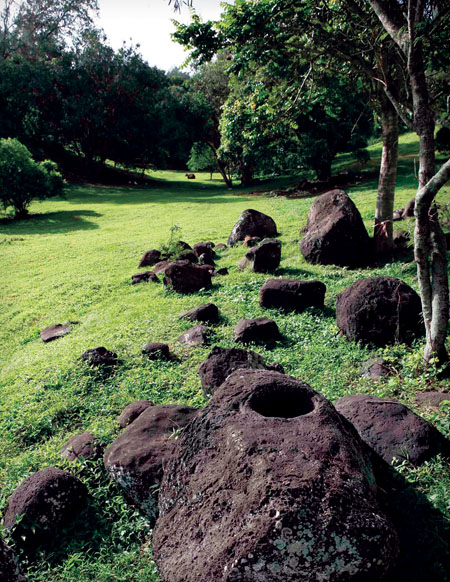
With respect as such for the land, it’s only natural that the retreat is almost fully self-sustaining. Jeanne and Robert believe the best way to teach sustainability is to live it, and their level of commitment to this endeavor is as high as you can go. A windmill generates their own energy and a well supplies water. Papayas, bananas and vegetables grow in abundance, using permaculture techniques. Robert, a passionate gardener, is especially proud of his extensive avocado and lychee orchards. Cows, sheep, goats and chickens supply fresh milk, cheese, eggs and meat. The lodge’s chef, Mo Elebkkaoui, originally from Morocco, specializes in creating organically fresh meals.
Within the lodge itself, the floors throughout are eco-friendly tiger wood. In the rooms, bed sheets are not changed every day and guests are encouraged to reuse towels and refill water bottles. Jeanne creates products she and Jacque use in the spa, such as using goats milk for body wraps and kukui oil for massage. Classes in learning these techniques are held, as well as in aromatherapy, spa oil preparation, cooking and permaculture gardening.
“We are trying to model self-sufficiency on all levels. Our ideal is to get to the point where we are producing everything we use here,” Robert reflected. “We have by no means finished our work, but there is something really calm and peaceful about this place, and it only gets better.”
Jacque Waters is the retreat’s assistant director. Also a student of Hawaiian culture, she shares Jeanne’s vision of healing: “The land and the energy of this place do the work, we just set the stage. Some people come and don’t know what they are looking for. But they spend time with the animals and the rocks, and find it anyway. That’s what we’re about.” ❖
Jeanne and Robert can be contacted at Ahu Pohaku Ho‘omaluhia at 889.6336 or info@Hawai‘i-island-retreat.com
Contact Cynthia Sweeney at sweeneywrites@yahoo.com.
Photos by Peter Beemer.
